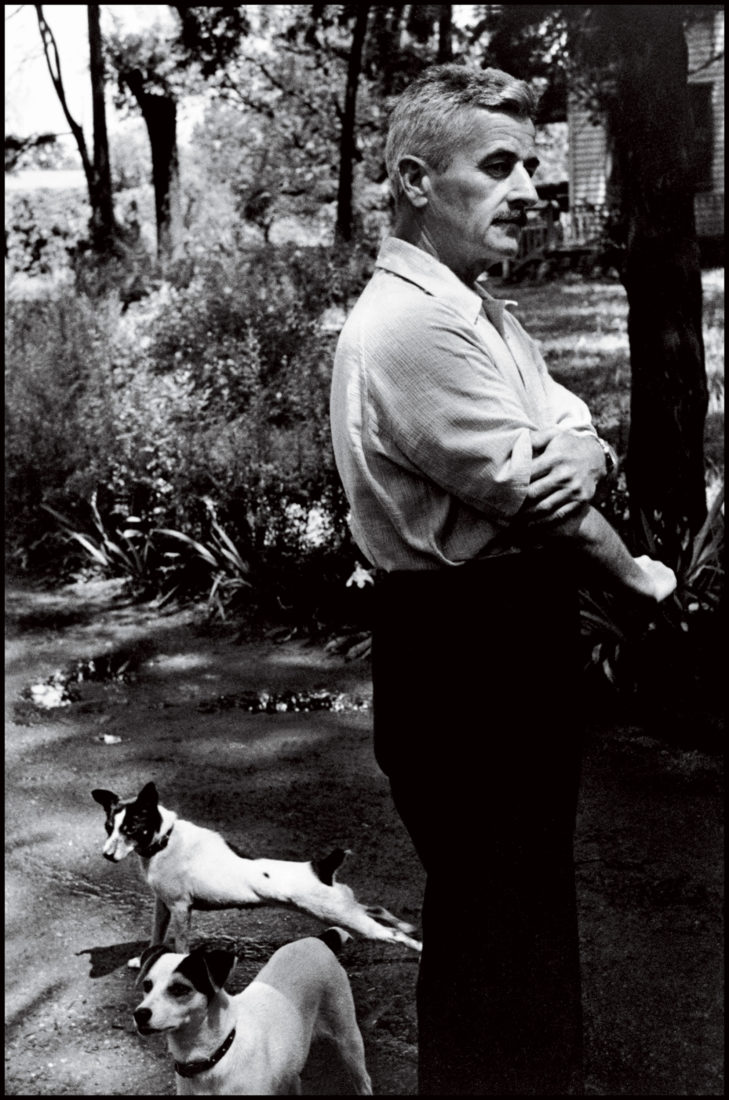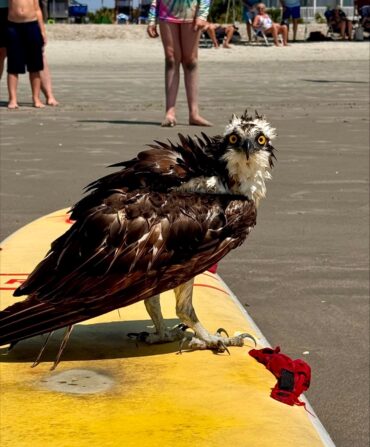Squirrel dogs are not trained, but awakened.
“I raised a dog, his name was Bull Durham, and it was eighteen months before he would tree,” says F. L. Chrisman. “I would take him out to the woods and he would just lay down and look at me and swap his tail in the leaves.”
Then one morning Bull Durham treed seven squirrels in a half hour.
“We call it the switch,” says Chrisman. “It’s like one day a switch goes off in the dog’s head and he knows he is a squirrel dog. And that is all he ever is after that.”
Scattered around on his porch, the members of the East Tennessee Squirrel Hunters’ Association nod in agreement. They are all familiar with the concept of the switch. Their reason for being in the association is the feist, a little dog that, for some mysterious reason, once his switch is flipped, lives for the ripple of a squirrel’s tail. C4, a lemon-and-white feist with yellow eyes and double dewclaws, meanders among us. He stops to accept a pat on the head, but seems puzzled as to how men could sit talking on the porch with a ridge of woods and its potential for squirrels so close.
The members of the association tell me that nobody knows exactly where feists came from. William Faulkner’s story “The Bear” includes a particularly brave fyce “not much bigger than a rat and possessing that sort of courage which had long since stopped being bravery and had become foolhardiness.” In a March 26, 1770, entry in his diaries, George Washington mentions a “foist looking yellow cur.” And in a poem by Abraham Lincoln, fice trail a bear “with instant cry.” Chrisman told me he believed the feist’s ancestors were the dogs of the American Indians. When the Europeans arrived, they may have taken a few home and crossed them with terriers. Maybe the progeny of these dogs returned to the New World, their rodent obsession even stronger from the rat, fox, and Manchester terrier blood.
“Paperwork means nothing to us. What they do in the woods means everything.”
Nobody knows. Feist lovers, most of whom live in the Southeast and the South, are proud of that. Their dogs vary almost as much as the stories of their origin. Small, chunky of body, slender of leg and paw and their head triangular, they are tricolored with spots; red and white; red; black; black and tan; blue and white; red brindle; white. There are natural bob tails, straight “pencil” tails. The breed is too diverse, says the American Kennel Club, for official recognition.
“We don’t care,” says Chrisman. “Paperwork means nothing to us. What they do in the woods means everything.”
Chrisman shares everything in his life with his feists. What is good enough for them is good enough for him. Last year he accidentally drilled a hole through his finger, so he went to the truck for the same Cut-Heal ointment that he uses for his feists’ hunting injuries. He has also discovered that a yellow salve he got from the vet in Newport works well on his earaches. Chrisman retired from the zinc mines, but he was in law enforcement for ten years. He ran for sheriff of Jefferson County in 1974, but lost. He found his truth elsewhere.
Feists had nearly disappeared when he started breeding and raising them more than twenty years ago. To Chrisman, raising dogs for their vision, their tenacity and intelligence, their hearts — instead of for the way they looked — brought back the very reason for the bond between man and dog.
“I love dogs. I’ve been that way all my life,” says Chrisman. “But I never was as enthused about any one dog as I am feists. Their one-track mind, their dedication, their smarts — we just don’t know how intelligent they are. We ain’t got that far.”
Eventually Chrisman passed on his love for feists to his son Randall, who, on a November morning fourteen years ago, talked him into selling him Billy the Kid, the dog against whom he now measures all others. As soon as Randall bought him, Billy the Kid chased a squirrel up inside a hollow sassafras on the ridge above their homes, where Randall found him staring pensively out a knothole thirty feet above the ground. Randall had to climb the tree and cut him out with a chain saw.
Billy the Kid showed his gratitude by beginning to win squirrel-hunting competitions all around the Southeast. Once, Randall promised him a steak if he won.
“He did, and I bought him one at the grocery store on the way home. He had a T-bone for his last birthday, too.”
But then F. L. and Randall tired of competitions. Now their greatest pleasure “is seeing a young dog become a treeing dog,” says F. L.
After dinner we walk among the feists. They hunker down and tremble in delight and give their breathy greeting. A couple escape and are sucked up the ridge like air. F. L.’s dogs include My Friend, Roxie, Blitz, and Little A. Randall has C4, Pepper, and Mud Puddles.
Billy the Kid is an old man now. He lives next to the creek close to Randall’s house. “He only hears a little now and sees mostly shadows,” says Randall. “But he’s still a dog. He’s got three new pups up there at the house.”
It’s okay to love your feists, says F. L., cupping Billy the Kid’s head in his hand. The dog lets his head rest. “They can come in the house and ride in the truck. The more you love them, the better they hunt.”








